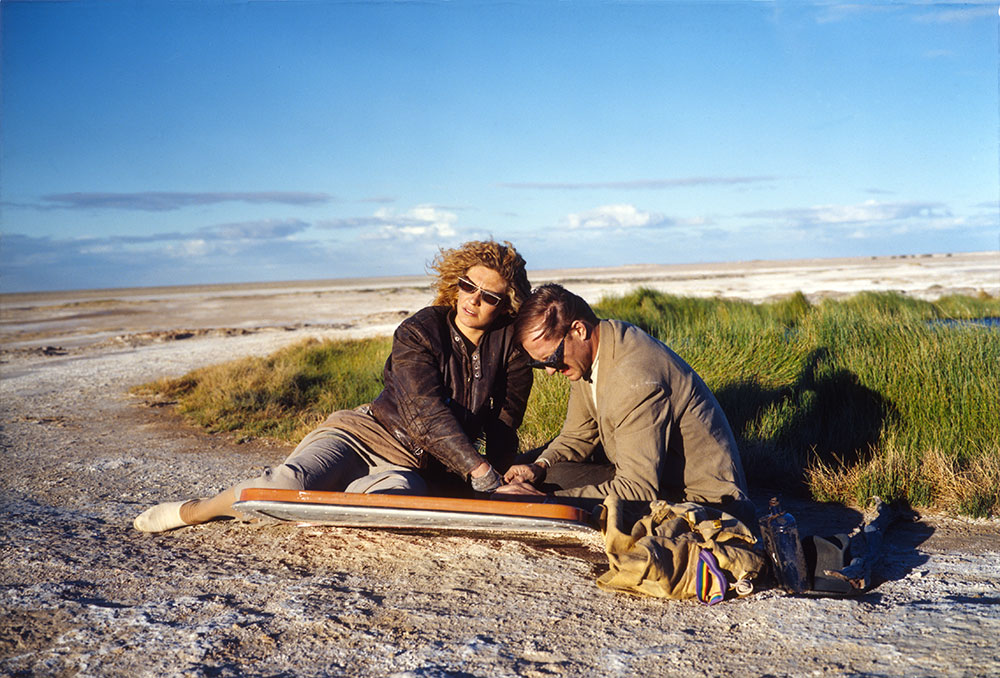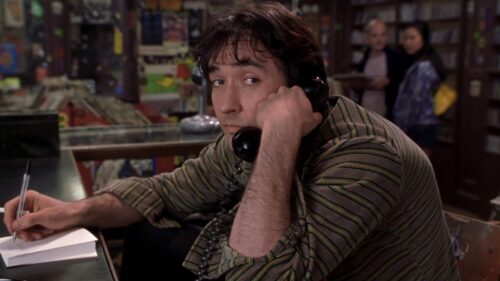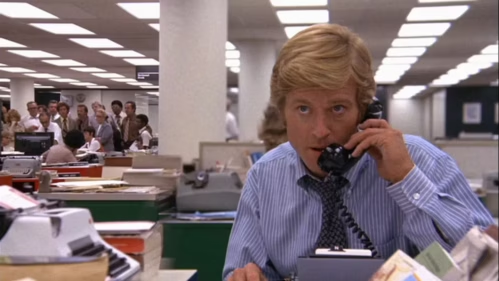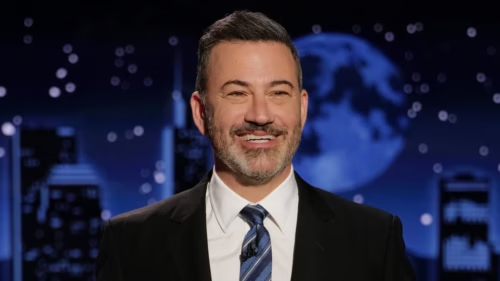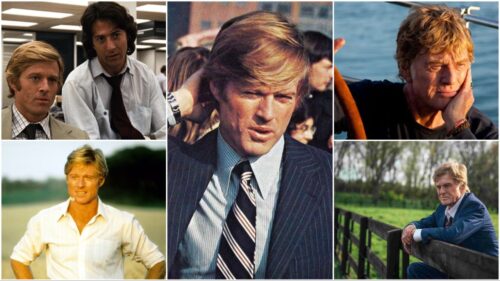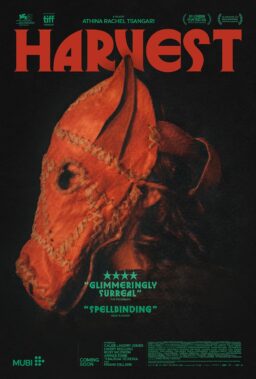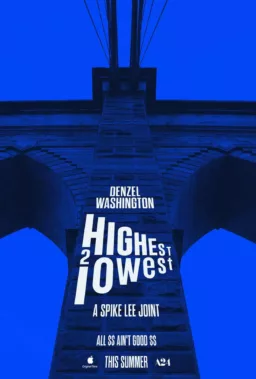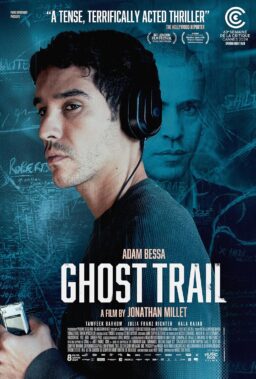Most of the films that you and I will see in the course of our lifetimes provide a couple of hours of entertainment and distraction, but are easily erased from our memories as soon as the end credits begin to roll. Every once in a while, however, one is lucky enough to come across a movie that resonates with them so deeply that it essentially becomes an obsession—they cannot imagine a moviegoing existence without it, nor understand people who either have not seen it or, even worse, do not share their utter devotion to it.
When “Until the End of the World” premiered in 1991, it was a notable critical and commercial disappointment. When it arrived in Chicago, it played in one theater for two weeks and was gone. Nevertheless, fueled by my interest in Wenders, who had just scored a couple of arthouse hits with “Paris, Texas” (1984) and “Wings of Desire” (1987), and this film’s soon-to-be-legendary soundtrack album (more about that later), I was there on opening night. I found myself so enraptured by “Until the End of the World” that I proceeded to see it no less than three more times over the course of those two weeks, so that I could get lost in its beautiful mysteries. Over the subsequent years, it pretty much disappeared. But thanks to the miracles of videotape, laserdisc, DVD and digital download, I have been able to return to it over the years, where my affection for it has not faded in the least.
There are numerous explanations as to why this film has had such a hold on me over the last quarter-century. But one part of the puzzle has always been my knowledge that what I saw back then was only the tip of the proverbial iceberg. Even though the film clocked in at a more-than-healthy 158 minutes, word soon got out that this was a version that Wenders edited down to satisfy contractual obligations, and that his original cut supposedly ran eight full hours. In fact, he continued working on the film after its aborted theatrical release, eventually arriving to a version that ran 288 minutes, which played at a few American museum retrospectives, and which also was released on home video in Europe. Alas, to this fan, it remained tantalizingly out of reach until at long last, a new 295-minute-long cut recently started touring the U.S. as part of a traveling Wenders retrospective (and is rumored to be getting a Blu-ray release through Criterion some day). This full-strength version of the film receives its belated Chicago theatrical premiere at the Gene Siskel Film Center on November 20 and 21—the concluding title to their Wenders series that has been running since early October—and while its nearly five-hour running time (with intermission included) may seem a bit daunting, those who skip out on it will be missing one of the great cinematic experiences of the year.
Wenders was, along with Werner Herzog and Volker Schlöndorff, one of the most successful of the new wave of German filmmakers to emerge in the early ’70s, thanks to a series of films that demonstrated his fondness for sprawling narratives, gorgeous visuals and American and British popular culture, especially of the musical variety. After first getting noticed for his so-called Road Movie trilogy, a series of three films (“Alice in the Cities” [1974], “The Wrong Move” [1975] and “Kings of the Road” [1976]) featuring stories involving the aimless wanderings of their characters, and for “The American Friend” (1977), his sleeper hit adaptation of one of Patricia Highsmith’s Tom Ripley novels, Wenders began work on what he contemplated as being the ultimate road movie—one that would literally be shot all around the world and in 70mm. However, he wound up traveling himself to America when he was summoned by Francis Coppola’s Zoetrope Studios to direct 1982’s “Hammett,” a mystery inspired by author Dashiell Hammett’s early days as a detective.
That project was a bit of a disaster that wound up being endlessly rewritten and reshot before getting lost in the Zoetrope bankruptcy, but Wenders soon recovered with “The State of Things” (1982), a low-budget work inspired by his misadventures making “Hammett.” He followed that up two years later with his internationally acclaimed drama “Paris, Texas.” After that, he returned home to Germany and soon created with “Wings of Desire,” a gorgeous fantasy about a couple of angels keeping unseen vigil over Berlin that would become a big hit across the globe. With the success of those last two films, Wenders finally had the clout to make his road movie epic, which boasted numerous intriguing elements: A screenplay written by him and co-writer Peter Carey (filmmaker Michael Almereyda apparently contributed an early draft as well). A cast that included a number of well-known faces. A $23 million dollar budget. A shooting schedule that would spread to 15 cities in seven countries on four continents (he would bring a core group of technicians with him and then hire local crews along the way to shoot in the various countries). And, an early version of high-definition video at Wenders’ disposal.
Set during the last part of 1999, the film begins by informing viewers that an Indian nuclear satellite has gone haywire, and is on a path to crash-land somewhere on Earth. Although this news inspires many living in possible target areas to flee to safer ground, free-spirit Claire Tourneur (Solveig Dommartin, who co-wrote the story with Wenders and who would pass away in 2007) barely seems to take notice of the panic around her. Heading home to Paris and her sometimes boyfriend/would-be novelist Gene (Sam Neill), she has a fender-bender with a couple of amiable crooks who have just pulled off a big bank robbery. She agrees to smuggle the money into Paris for them in exchange for a cut of the proceeds. While on her way, she runs into Trevor McPhee (William Hurt), a mysterious American who is being pursued by someone with a gun and asks her for a lift. She agrees and the two make it to Paris where they finally part, and she returns to Gene with the money.

And yet, Claire is intrigued by Trevor—especially when she learns that he has taken some of the money—and impulsively goes off in pursuit of him, following him from Paris to Berlin to Lisbon to Moscow to Bejing to Tokyo, where he finally lets her in on what is going on with him. His name is actually Sam Farber and he is being hunted down by the U.S. government for stealing the prototype of a machine invented by his scientist father (Max Von Sydow)—a camera that can record the brainwaves of the person using it and play them back for someone else, essentially allowing the blind to see—and collecting images from around the world for his blind mother (Jeanne Moreau) to see. While the sheer effort of capturing images is agony for Sam, Claire is a natural at it. Before long, the two set sail for Australia, where Sam’s father has set up an elaborate research facility in a cave deep in the Australian outback, with Gene, bumbling detective Phillip Winter (Rudiger Volger) and one of the bank robbers (Chick Ortega) close behind.
They have barely landed in Australia when the United States decides to shoot down that rogue satellite, a move that creates an electromagnetic pulse that evidently wipes out most of the world’s electrical and communication systems. When everyone finally arrives at Dr. Farber’s lab, he and Sam get to work on experimenting with the camera, reopening any number of old wounds along the way. Meanwhile, the others gather together and begin bonding through the universal language of music while preparing for what might be the end of the world as they know it. Eventually, it is discovered that while the camera is able to bring sight to the blind, it also has the ability to allow users to record their own dreams and play them back later on. The downside is that watching dreams this way eventually leads to both psychological and physical addiction. Before long, things begin to spiral out of control, as both Sam and Claire are at risk of literally getting caught up in their own minds with no way out.
From the first moment I saw “Until the End of the World,” I simply fell in love with it. Visually, it was extraordinary in the way that Robby Müller and Wenders captured the look and feel of the various locales without resorting to the usual touristy vistas. I liked the way that the screenplay managed to mix together a number of different narrative ideas—speculative sci-fi, philosophical questions about the use and abuse of technology, oddball humor, romance and apocalyptic drama, to name just a few—in always-surprising ways. I liked the relationship that eventually develops between the two central characters on their journey. Most importantly, as a longtime fan of road movies—possibly because of my own personal uneasiness with the notion of traveling much of anywhere in real life—I loved watching a master of the form making what remains his—hell, anyone’s—final word on the subject.

That said, my love for the short version of “Until the End of the World”—and I do realize how odd it is to refer to a 158-minute-long film as “the short version”—has always been tempered by the inescapable fact that it was an uneven film in many ways. Some of the transitions from scene to scene seemed a bit choppy, and there were some elements that simply didn’t make sense, especially Gene’s willingness to go to the ends of the Earth to help Claire in her pursuit of another man. This also affected the developing relationship between Claire and Sam/Trevor—one minute he was suspicious of her motives and the next moment found him trusting her with his biggest secrets. There also seemed to be an imbalance in the film—after spending roughly the first two-thirds of the running time trekking the globe, it suddenly plopped down in the Australian outback for a lot of scientific mumbo-jumbo about the primacy of images and the dangers of technology. Oddest of all, this version lacked the epic feel that it was clearly going for—despite having been shot all over the world, the story was so rushed at times that you never quite got a fix on the full scope of what Wenders was attempting to pull off. But even in that truncated version, Wenders’ ability to create a cinematic vision of this size and scope is both a delight, and a depressing reminder of how far we have gone in the opposite artistic direction in the last quarter-century.
In terms of the basic narrative, the long version of “Until the End of the World” is not radically different from the shorter one—there are no major plot divergences that I can easily recall. That said, the addition of the roughly two extra hours of footage adds so much to the proceedings that it all but renders that short version utterly superfluous as anything other than a curiosity. Moments involving the careening satellite and its effect on an increasingly jittery population that were previously removed have been returned to their proper place, and give a plot development that had once been given short shrift in the original a more prominent place in the story. The relationship between Claire and Sam, which had moved in fits and starts in the short version, now has time to breathe and develop gradually in ways that make their story more convincing. And by establishing a proper balance between the globe-trotting section and the stuff in the Australian outback, the shift from road movie to metaphysical sci-fi drama feels a lot less abrupt as both sides now receive more or less equal narrative weight.
Most significantly, by being restored to its intended length, “Until the End of the World” finally feels like the epic that Wenders always intended it to be when he first conceived it. The first version contained a number of great individual scenes—a screwball shootout in a pachinko parlor in Tokyo, a bizarre encounter with a paranoid used car dealer (Allen Garfield) in San Francisco and the cast gathering around a fire in the outback to sing The Kinks’ “Days” among them—but unless you instantly fell in love with it to the degree that its most fervent followers did, it might have seemed like just a collection of scenes that jumped from locale to locale. Now, one gets more of a feel for the journey being undertaken by Claire and Sam, along with more appreciation of what Wenders was able to achieve under what must have been arduous circumstances. This is not a movie that has been made by someone who is working just for the sake of working—this is the creation of someone who is, like his characters, obsessed with capturing stunning images straight from his dreams and showing them. One cannot help but be swept away by that sense of obsession as well. (This obsession ran so deep that when the money people finally pulled the plug on Wenders just before he was to shoot the China material, he sent Solveig Dommartin and a single camera person there to shoot the material on their own.)

As with any film that is set in a future that is now part of our past, there is the temptation to look at “Until the End of the World” to see how close, or how far off, it was in predicting what was to come: While the notion of a unified Europe does not seem especially odd today, the film did predate the formal establishment of the European Union by a couple of years. The film’s notion of the turn of the millennium arriving with everything being wiped out by technology run wild will strike a chord with anyone who remembers all that Y2K nonsense. Some of the technological advances on display proved to be startlingly prescient as well, from people utilizing tablet-like screens to autos with then-unheard-of GPS satellite navigation systems. Weirdest of all, the final segment of the film—in which characters become hooked on their own dreams and spend all their time staring vacantly into their personal screening devices to see more and more of themselves—serves as a strangely apt prefiguration of today’s selfie-obsessed culture. Really, the only true howler in regards to its predictions is that the film proposes that in 1999, Talking Heads were still together, but the Rolling Stones had broken up for good.
Which brings us to the one element of the film that even those who have never seen it may be familiar with—the soundtrack. Obviously, a road movie offers up any number of opportunities for musical moments (as Wenders himself had demonstrated many times in his previous films) and knowing that he would have plenty of slots available, he reportedly contacted a number of his favorite musicians with requests for new songs that would sound like the kind of music that they themselves might be playing in 1999. Since the musicians that he contacted included the likes of U2, Peter Gabriel, Talking Heads, R.E.M., Elvis Costello, Patti Smith, Nick Cave, Lou Reed, Robbie Robertson, CAN, Daniel Lanois and Depeche Mode, among others, he had a plethora of material to choose from. Rather than drop songs, he elected to include as many of them as possible. This made for a killer soundtrack album (it is often regarded as one of the great soundtracks of the ’90s) but some of the songs wound up getting a little overlooked in the shorter version. In interviews, Wenders has claimed that one of the reasons the film ran so long was to better highlight the songs. Indeed, the music does play a more prominent part in the proceedings—the juxtaposition of Claire and Sam staggering out into the streets of Tokyo with Nick Cave crooning “(I’ll Love You) Till the End of the World” is gorgeous, as is the two of them wandering in the outback with an alternate version of Peter Gabriel’s “The Blood of Eden.” And if the soundtrack is not already a part of your music collection, you will almost certainly want to buy it as soon as you finish watching the film.
Although technological advances in film have grown in recent years to the point where things that were once inconceivable are now commonplace, the visions behind these sights have largely grown punier over time—filmmakers can devise elaborate set-pieces but are hamstrung when it comes to developing a narrative that allows backgrounds to serve as something other than meaningless eye candy. “Until the End of the World,” on the other hand, has vision to spare and besides its own artistic triumphs, it stands as a worthwhile elegy for a time when film artists were allowed to take chances with deeply felt material that didn’t necessarily fit into all of the required quadrants. At nearly five hours, sitting through it in one big gulp may seem more than a bit daunting, but those who are afforded the chance to see it in a theater (this is a film that needs to be seen on the biggest screen possible to best represent its epic scale) should really make the effort to catch it. In hindsight, when I described it earlier as one of the great cinematic experiences of the year, I was wildly underselling it. Wenders’ film will go down as one of the great cinematic experiences of a lifetime.
“Until the End of the World” will be screening at the Gene Siskel Film Center on Friday, November 20th and Saturday, November 21st. There will be a 10-minute intermission.

